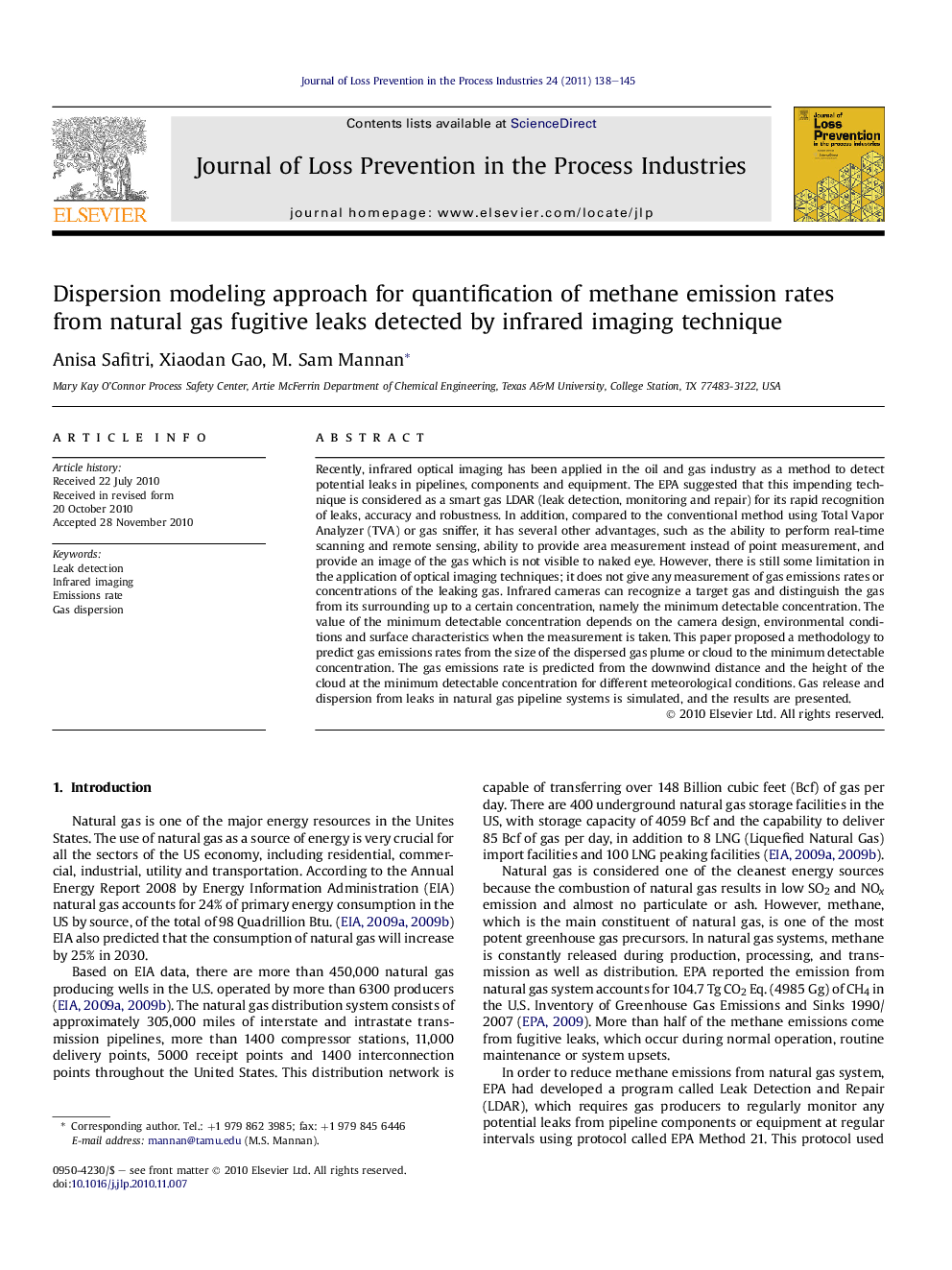| کد مقاله | کد نشریه | سال انتشار | مقاله انگلیسی | نسخه تمام متن |
|---|---|---|---|---|
| 586437 | 878212 | 2011 | 8 صفحه PDF | دانلود رایگان |

Recently, infrared optical imaging has been applied in the oil and gas industry as a method to detect potential leaks in pipelines, components and equipment. The EPA suggested that this impending technique is considered as a smart gas LDAR (leak detection, monitoring and repair) for its rapid recognition of leaks, accuracy and robustness. In addition, compared to the conventional method using Total Vapor Analyzer (TVA) or gas sniffer, it has several other advantages, such as the ability to perform real-time scanning and remote sensing, ability to provide area measurement instead of point measurement, and provide an image of the gas which is not visible to naked eye. However, there is still some limitation in the application of optical imaging techniques; it does not give any measurement of gas emissions rates or concentrations of the leaking gas. Infrared cameras can recognize a target gas and distinguish the gas from its surrounding up to a certain concentration, namely the minimum detectable concentration. The value of the minimum detectable concentration depends on the camera design, environmental conditions and surface characteristics when the measurement is taken. This paper proposed a methodology to predict gas emissions rates from the size of the dispersed gas plume or cloud to the minimum detectable concentration. The gas emissions rate is predicted from the downwind distance and the height of the cloud at the minimum detectable concentration for different meteorological conditions. Gas release and dispersion from leaks in natural gas pipeline systems is simulated, and the results are presented.
Research highlights
► Dispersion modeling is used to predict gas flow rate from a leak in natural gas pipeline.
► Infrared cameras detect gas to a minimum detectable concentration.
► Gas leak rate is estimated based on the size of the cloud observed from thermograms.
► The amount of gas released depends of the upstream pressures and leak sizes.
Journal: Journal of Loss Prevention in the Process Industries - Volume 24, Issue 2, March 2011, Pages 138–145